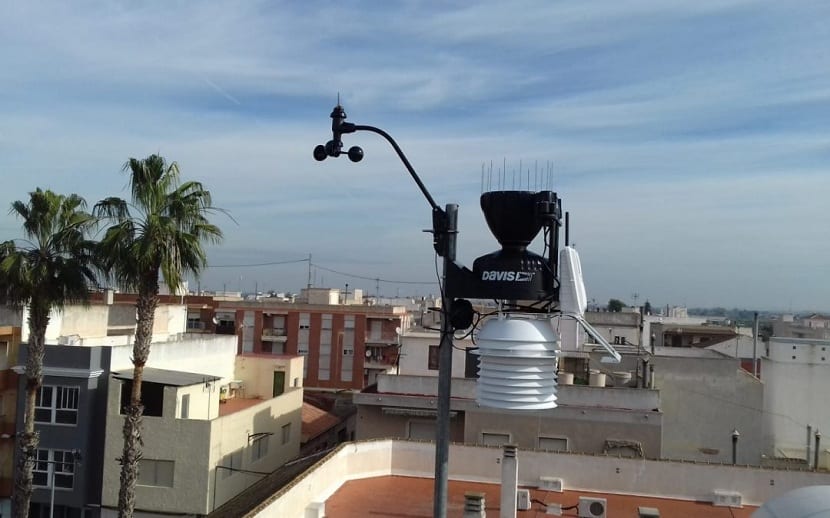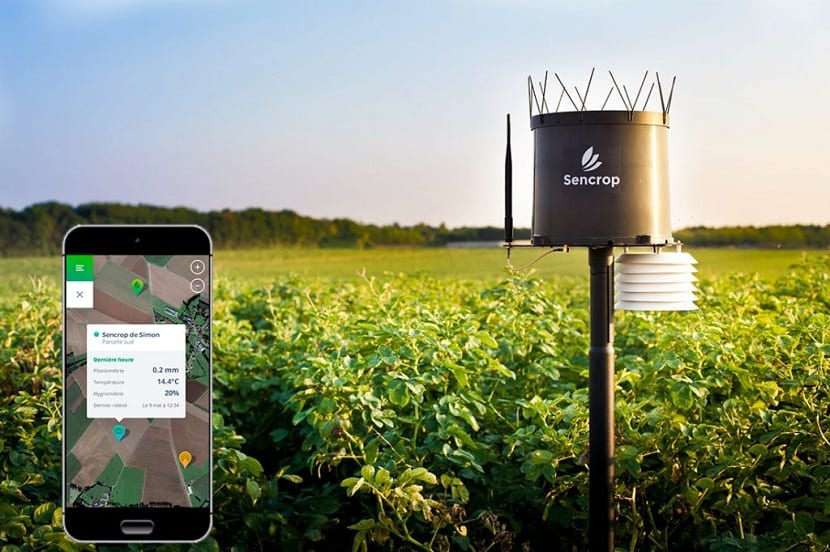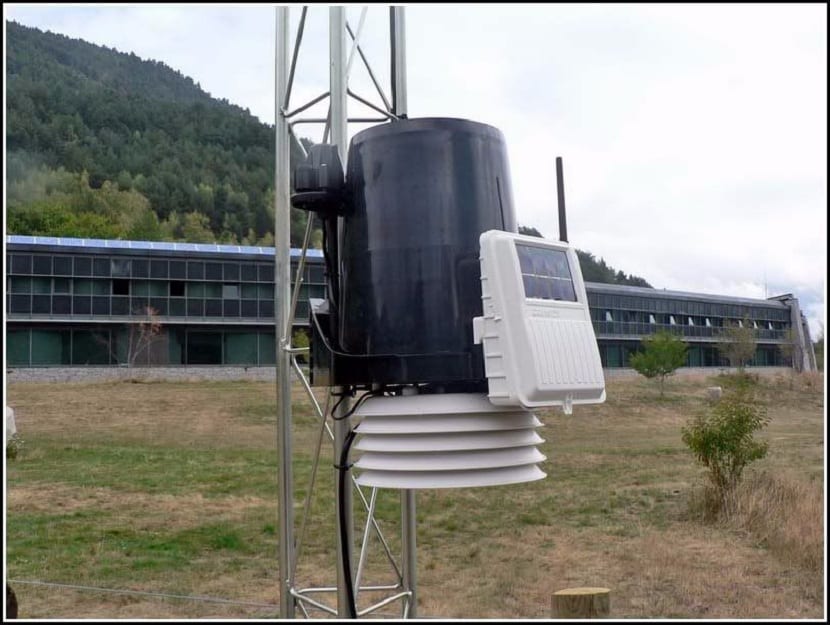
When talking about the meteorology and climatology of a place, these characteristics have been collected through devices that can record data. The data that are of interest to define the meteorology or climatology of a place are the meteorological variables or also known as climate controllers. The values of these variables are studied, measured and collected in the Weather Station. It is nothing more than a device capable of collecting all these atmospheric variables that are of interest to the meteorology of an area.
In this article we are going to tell you what are the main characteristics, applications and types of weather station that exist. In addition, you will know the importance they have for the knowledge of meteorology.
Key features

It is a device that can be installed on any terrain and in any part of the world. You need certain requirements so that you can perform the measurements as well as possible, but they are not too complex requirements to fulfill. To measure all the atmospheric variables, a single device is not enough, since it is important to evaluate the range of error in the measurements. It is not possible to leave all the confidence placed in what makes a single measuring device.
For this reason, the area of land dedicated to the installation of different meteorological instruments is known as a meteorological garden. The usefulness of the meteorological station is very high and thanks to it, valuable data can be obtained. Among the best known functions we have the following:
- Know the weather conditions of the place where it is located.
- To be able to make comparisons with other stations in nearby places to see how the data varies and check the veracity of the same.
- They help to obtain information that is needed to obtain the weather forecasts. With the data obtained, various numerical models are used for calculations. In this way, it is possible to provide the data to indicate the weather forecast.
- They serve to create climate information in a representative way of the place where we collect the data.
- With it you can create information alerts on meteorological phenomena that may affect or be of interest. For example, the existence of a front with possible rains.
- Thanks to the data obtained, correlations of weather phenomena can be made that have been able to generate some risk situations, accidents, etc.
- Important data are obtained for the development of crops in agriculture and to prevent the destruction of crops.
Types of weather station

A meteorological station is responsible for measuring a large number of atmospheric variables. We are going to make a list with them:
- Temperature in air
- Humidity
- Barometric pressure
- Wind speed
- Direction of the wind
- Precipitation
- UV level
- Snow Thickness
- Soil temperature
- Humidity of floor
- Solar radiation
- Visibility
- Contamination analysis
- Light hour measurement
- Measurement of cloud height
Although there are different types of weather stations, they all usually measure the same or almost the same. Also depending on the quality of each one. We are going to analyze which are the most important stations:
Domestic weather stations
They are those that are for a general public. Its price is quite cheap and it has simpler features. They do not have to connect USB devices and it measures basic meteorological information such as temperature, humidity, atmospheric pressure and precipitation.
Stations with PC connection
As the name suggests, they are capable of connecting to a computer through a USB device. This data is exported and viewed in Excel. They are among the most famous among fans of meteorology. These are somewhat more expensive than the domestic ones since they have more capacity to measure meteorological variables.
It measures the same as domestic ones but they can also measure solar radiation indices, wind direction and speed. In addition, it is capable of giving you values of wind chill and the dew point temperature.
Wifi weather stations
These stations have an advantage over the previous one and that is that it is capable of transmitting data to the internet to be able to broadcast it online. The connection can be by Wi-Fi or by direct cable to the modem. Among its characteristics we find some models with a screen, so it is much easier to analyze the data on site. They are the most popular among the most amateur of meteorology.
Portable weather stations
They are pocket stations. They are designed to be able to collect data at very specific moments and are related to the performance of outdoor activities. There are many plans that are stopped due to weather conditions. Thanks to this station, you can know the atmospheric variables to know the forecast of rain or adverse weather. They do not have the same precision of a larger station, but it is quite useful.
What instruments does a weather station have

To be able to measure all these variables, measuring devices and meteorological instruments are needed. We are going to comment on the characteristics of each instrument and the functions they have:
- Thermometer. I think it is the most obvious, since if we want to measure the temperature it is necessary. Temperature is considered the variable that most affects humans.
- Hygrometer. It is used to measure the humidity in the air and the dew point. In this way, we will be able to know how humidity affects the thermal sensation at all times, both in combination with heat and cold.
- Pluviometer. Necessary to measure rainfall at all times. It gives us important data on torrential rains, agriculture and water supply.
- Anemometer. Ideal for measuring the speed at which the wind is blowing. It is essential to know it to know the time.
- vane. It is the one that serves to indicate the direction in which the wind blows.
- Barometer. It is used to measure atmospheric pressure. It is another of the most important variables to measure. It is what tells us the evolution of time and thanks to it we can know if the weather is going to improve or get worse.
I hope that with this information you can learn more about the weather station and its characteristics.
Very specific